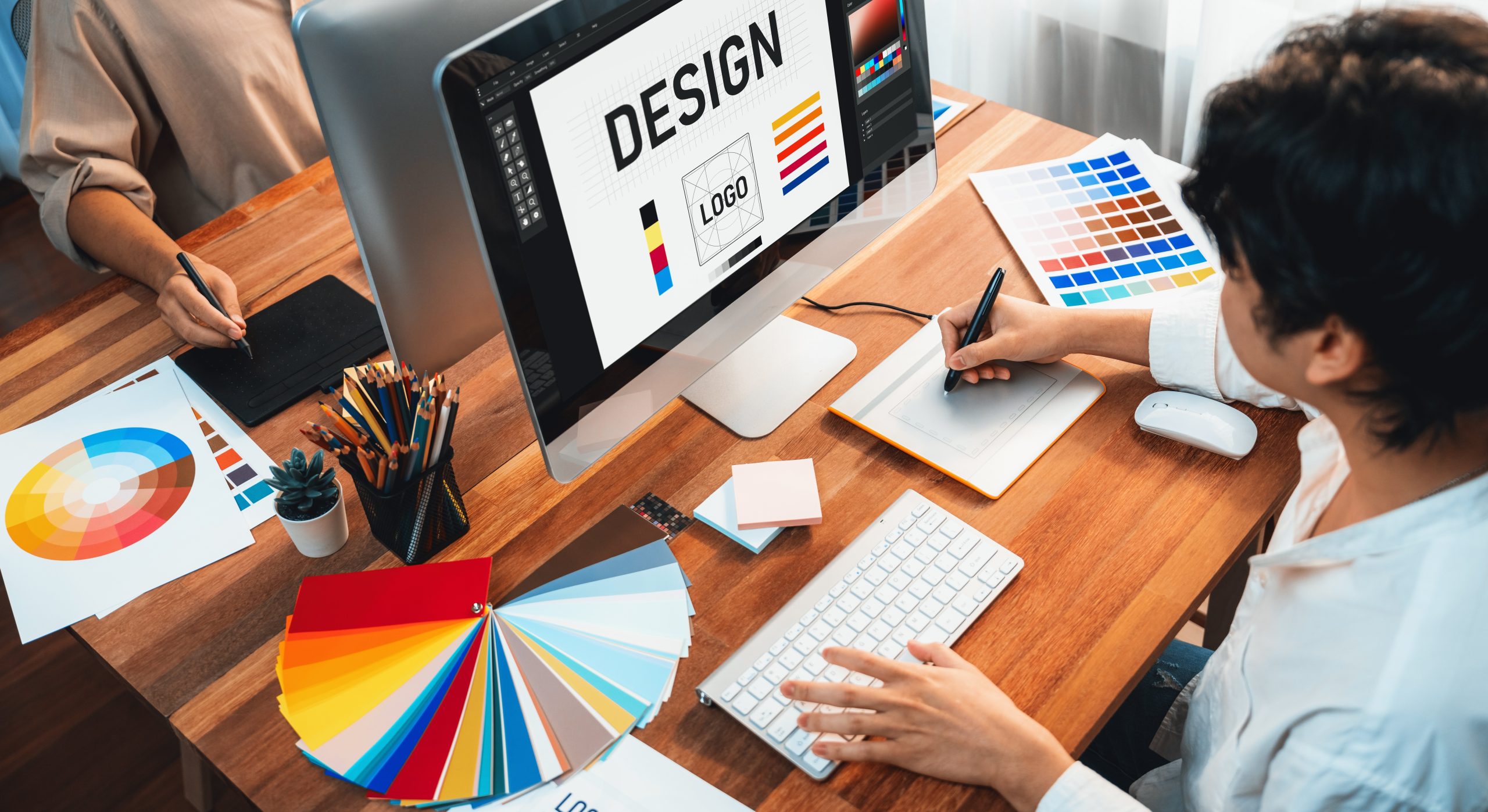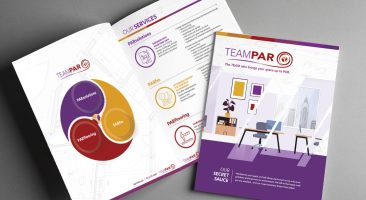How is the Rule of Thirds Used in Design?

Did you know that 90% of information transmitted to the brain is visual? In fact, our eyes can register 36,000 visual messages per hour. The brain has the unbelievable capacity to see images that last for just 13 milliseconds.1 In other words, visual design matters. Every color, shape, and line your business puts out there is not just seen but felt, shaping the way your audience perceives and interacts with your brand.
At Paradigm, graphic design is our passion. Why? Because we understand the profound impact these visual elements have in forging strong emotional connections—transforming mere concepts into graphic experiences that captivate, inform, and engage. The Rule of Thirds is a simple yet powerful concept in design that brings this theory of visual impact to life by strategically organizing content to harmonize with human visual perception.
The Definition of the Rule of Thirds
The Rule of Thirds is a compositional principle in visual arts that divides a frame into three evenly spaced rows and columns, making nine equal sections. By positioning key elements along these lines or at their intersections (known as power points), you achieve a more balanced, natural, and pleasing arrangement that draws the viewer’s eye across the composition.
How is the Rule of Thirds Used in Design?
The Rule of Thirds is commonly used by graphic and web designers to enhance aesthetic appeal and strategically direct viewer attention. In graphic design, the Rule of Thirds is used to determine the placement of key graphical elements, such as logos, typographic details, and other pivotal components. Web designers use the Rule of Thirds to guide user interactions and visual flow. By placing elements like navigation menus, login forms, and search bars along these strategic points, you improve the user experience by creating a more intuitive and user-friendly website.
How the Rule of Thirds Creates Visual Interest
By applying the Rule of Thirds to your design, you create a visual balance that is both pleasing and engaging. In essence, this rule distributes the visual weight of a design, guiding the viewer’s eye to move smoothly across the artwork. Such strategic placement is especially critical for designs intended to communicate a message or promote a product, as it can significantly boost the clarity and impact of your communication.
Examples in Graphic Design:
Here’s how it might work across various graphic design mediums:
- Logo placement: A company logo on a business cardcan stand out more effectively if it is placed at the lower right intersection rather than centering it.
- Web banners: In banner designs, text or key images placed along the top or bottom third can be more impactful and readable than a more central placement.
- Social media ads: In the social media space, aligning text or key visuals along these strategic points makes the content more compelling and click-worthy.
- Event flyers: For marketing events, positioning key details such as the event title, date, and location according to the Rule of Thirds can make the flyer more visually appealing and easier to read. This can help attract more attendees by making the important information stand out.
- Email marketing: In email campaigns, placing crucial information like discounts, offers, or call-to-actions (CTAs) at the intersections can increase visibility and reader engagement. This helps ensure recipients notice and act on the most important elements of the email.
Examples in Web Design:
Here’s how the Rule of Thirds can be applied in various aspects of web design:
- Landing page design: On a landing page, placing the main banner image (often called a hero image) along the top third and the main CTA button at one of the intersections can make these elements more prominent. This layout guides the user’s attention to the CTA, increasing the chances of conversion.
- Blog layout: Positioning images at the intersections and aligning the main text body of your blog along a vertical third creates a visually appealing and easy-to-read format. This layout keeps readers engaged by breaking up text with strategically placed visuals.
- Service pages: For service or solution description pages, placing key service images along the top or side thirds and the descriptive text near the intersections can emphasize the services offered. In doing so, you highlight the most crucial information while also making it easier for users to navigate through different services.
- Navigation menus: Aligning the main navigation menu along the top third of the page ensures it is easily accessible and visually balanced. This placement gives your site a clean and organized appearance and helps users quickly find what they are looking for.
Can you Break the Rule?
Absolutely! Like any rule in creative disciplines, the Rule of Thirds is not set in stone. It’s a tool, not a law. In fact, breaking this rule may even lead to unique, eye-catching designs that stand out for their boldness and originality. The Rule of Thirds provides a foundation that helps you understand the fundamentals of good design, guiding you to create balanced and engaging compositions. Once you’ve mastered these principles, you can break them intentionally to craft innovative and dynamic designs that capture attention and make a lasting impact.
Your Graphic Design Partner
At Paradigm Marketing and Design, we live and breathe graphic design. We know the psychology of design, and we will work with you to create compelling graphic designs for your business that resonate with your audience and evoke the desired emotions while ensuring a cohesive and recognizable identity across all platforms and channels.

















 Phone:
Phone: